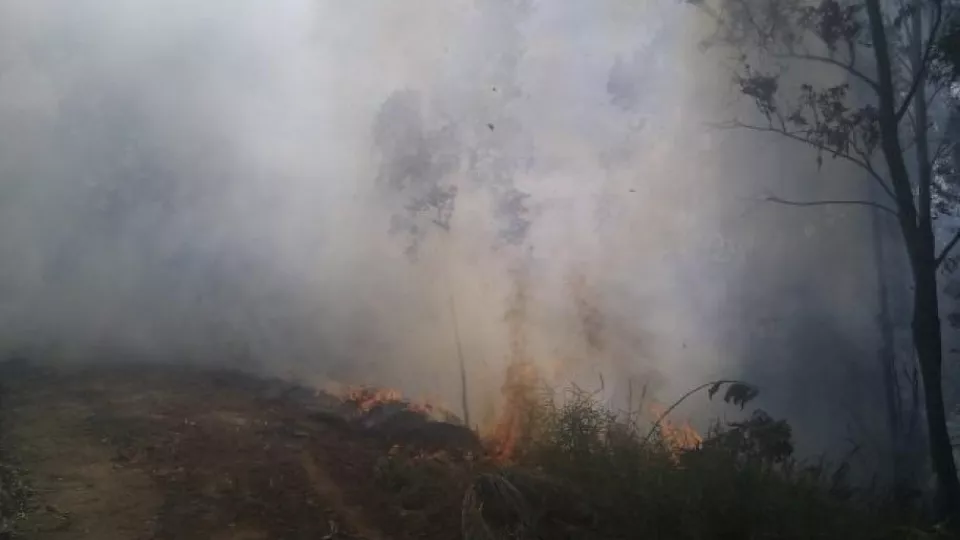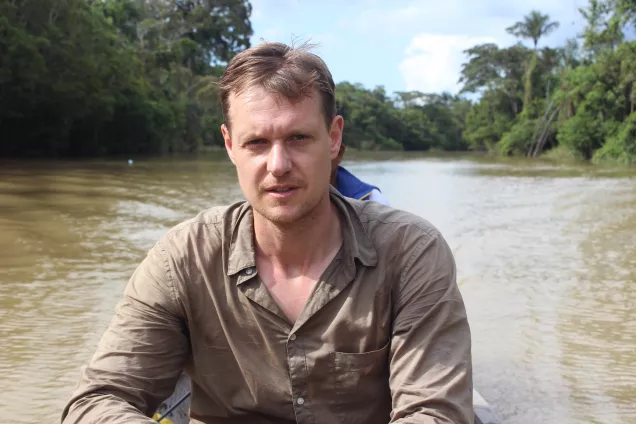Why is there a likely increase in forest fires?
In the spring (Jan to May 2020) approximately 2000 km2 of rainforest in the Brazilian Amazon were deforested, 34% more than last year (according to the INPE (National Institute for Space Research), which was also a year we will remember for the devastating fires. It is these areas that are now burning, but the fires are also spreading to other, non-deforested areas and primary forests. For the state of Amazonas alone, there were more than 7700 individual fires just in August, which is the highest number since 1998 when the counting started. August is usually dry in the southern Amazon region and it is no surprise that fires start this time of the year.
There are probably several reasons for the fires, climate change might play a role, although this year does not seem to be overly dry compared to other years. But clearly the political support or outspoken negligence by the current government under president Bolsonaro is to blame for a large part of the current fires and deforestation.
Infrastructure projects and roadbuilding is accelerating, leading to easier access to forest areas, and industrial large scale agriculture in the Amazon is portrayed as the model for development. At the same time, the IBAMA (Brazilian Institute of the Environment and Renewable Natural Resources which is part of the Brazilian Ministry of the Environment) has had funding cuts and is being systematically dismantled, and as a result can no longer carry out controls against deforestation.
What is Brazil's president, Jair Bolsonaro doing?
On one hand he is sending the military to fight deforestation, after growing national and international pressure, and perhaps to look a little bit better, but effectively there have been reports that the military is rather focusing on seeing the infrastructure projects through and not doing much about fighting deforestation. So, in short, Bolsonaro is not doing much, which is not surprising, because in Brazil he was voted in power because he has a very outspoken anti-environment and anti-indigenous agenda. Without serious international pressure not much will change here I am afraid.
Why are global efforts and pressure not enough to halt this development?
To put it very simply, because they are half-hearted and remain largely political discourses. They are lacking teeth, and sanctions that might be hard enough to have an effect. Also, quite a substantial part of Brazilian exports don’t go to the EU but to China and the US. For instance cattle, one of the main culprits of deforestation – most of which is being exported to China and the Middle East. So, any efforts must be global and not only EU driven.
What will be the consequences of these repeated fires coupled with deforestation and defaunation?
The more forest is being lost to fires, and the more the remaining forests are being degraded, for instance by selective logging and defaunation (the loss of forest fauna due to hunting or ecological changes), the higher the risk that the Amazon region will enter a tipping point, where the entire system may shift into a different ecological state from forest to savannah. This is projected to have a tremendous impact on the world’s climate, will exacerbate global climate change and greenhouse Gas emission and will also lead to an unimaginable loss of biodiversity. The consequences of this will affect the entire world.
An important regional consequence is the predictions of a changing rainfall regime in Brazil, where the rains that the Amazon forest generate and which secure Brazil's rainfed agriculture will change and thus lead to increases in droughts which will decrease the possibility to continue the large-scale industrial agriculture that relies on these rains. In a way it is the perfect example of digging your own grave, in this case the agricultural expansion, which eats into the rain machine it depends on.
Is there anything Sweden and EU can do that we are not doing?
We can speak up and become more serious about stopping the trade agreements with Brazil. If Brazil cannot curb deforestation and as long as Bolsonaro does not change tone, in rhetoric and in practice, a trade deal should not be made. But, we all have to be aware that it is not just the cattle we import, but a lot of other products, for instance soy that is processed into feed for chicken and pigs, which are more hidden, also contribute to deforestation in the long run. Consumer awareness is very important, but in the end I do think political pressure, sanctions (if they are politically and legally defendable) and the private sector changing its supply chains (for instance H&M no longer buying Brazilian leather) are tools that need to be scaled up.
Can the Amazonas survive repeated fire at this scale?
Well, the Amazon is large and not all of the Amazon is burning. But the Amazon biome as a whole is being eaten into on all sides. Right now there is a mining boom in Venezuela in the north; agriculture, mining, oil extraction and roadbuilding in the north-western Amazon in Colombia, Ecuador and Peru, as well as agricultural expansion in Bolivia in the southern Amazon region. Every year the Amazon rainforest is being more and more decimated. At the same time, the intact forest areas are being degraded by logging, pollution and overhunting. Taken together, if we continue on this path, even if deforestation decreases, we will still loose sizable areas every year, thus only slowing the destruction, but not stopping it. So, in the long run I do not think that the world is on a right track and the Amazon as we imagine it or would like to imagine it will not survive.
However, looking into the past, the Amazon biome and it’s forests underwent changes with expansions and contractions of the areas covered by forests. Also, before the Spanish came many regions in the Amazon basin were inhabited by many more people than is the case today, but those populations disappeared because of diseases brought by the Europeans and the forest grew back. Tropical rainforests can be quite resilient and bounce back if they are allowed to and of the conditions are right.
The big unknown and uncertain factor though is how the Amazon region will react to climate change, even if deforestation could be stopped today, climate change is still a risk factor.

